for Inebriates
Rehabilitation (inebriates)
In 1905 the Sanatorium moved to larger premises, leasing The Mansion in Beckenham Park, Kent, previously occupied by the Craven College for Boys, a small boarding school which transferred to Elmer Lodge in Beckenham.
The three-storey 18th century mansion house, known as Beckenham Place, was leased for 21 years. The first floor rooms were divided up to provide several bedrooms, with blind windows opened up to provide light. Following the alterations, the Sanatorium had 12 beds. Weekly charges varied from two and a half guineas (£2.63) to 6 guineas (£6.30).
The Sanatorium was managed by a committee of well-known medical men, who derived no pecuniary benefit from the work carried on there; any profits made were devoted to the further study of inebriety and its treatment. Until the Sanatorium could be self-supporting, the deficit was made up by Joseph Rowntree of York, who was anxious that the medical treatment of inebriety, both alcoholic and other, be placed on a scientific basis.
A course of treatment at the Sanatorium lasted six weeks. On admission, the patient was physically examined and a history was taken. Unless there was a contraindication, a brisk initial purge was given. The next day the patient was given a tonic to drink, consisting of red cinchona bark, gentian and capsicum, together with minute doses of strychnine and atropine (by the end of the third week the capsicum and strychnine were omitted). This tonic was administered six times daily at regular intervals. Afterwards, hypodermic injections of strychnine nitrate and atropine sulphate were added to the regime, three times a day at regular intervals. The doses of strychnine and atropine were gradually increased, then gradually reduced. By the middle of the third week, the atropine had fallen in nil, while the strychnine was continued in slowly diminishing doses until the end of the sixth week.
Patients varied widely in susceptibility of both drugs, which either had to be reduced or increased accordingly. The drugs produced distinct physiological responses - slight muscular twitching, dryness of the tongue and back of the mouth, some dilatation of the pupils and loss of power of accommodation of near vision, and sometimes irritation of the skin.
The injections produced some undesirable symptoms too - an increase in nervousness, difficulty in mastication, vertigo, semi-volitional rigidity of the legs and an ataxic gait.
Regular outdoor exercise was considered to be important. During the first two weeks of treatment, until the injections had had time to exert their full influence, the patients were advised to confine their walks to the Sanatorium grounds, which were ample for this purpose. Thereafter, they were encouraged to extend their walks over the whole neighbourhood and were allowed to come and go, provided they turned up regularly for meals and treatments; most bought a short season ticket for the Crystal Palace and spent much of their time there.
While the drug treatments were believed to be essential, much of the success attained could be attributed to the complete change of environment involved in residence at the Sanatorium. It was also considered that meals were frequent, well-cooked and ample.
In 1908 a branch opened in No. 93 Church Road for female patients.
From September 1905 until the end of December 1908 some 349 patients had been admitted and undergone treatment.
In 1927 the LCC purchased the land. The Sanatorium closed in 1933 and moved to Rendlesham Hall in Woodbridge, Suffolk.
Present status (March 2011)
The LCC bought the adjacent private golf course and, in 1934, made it open to the public. Part of the former Sanatorium building became its club house - the Beckenham Place Park Golf House.
During the 1930s the building had a variety of uses. Part of the house was converted into three apartments for council employees.
In 1954 Beckenham Place was Grade II* listed.
By the beginning of the 21st century, the first and second floors of the building had fallen into disuse and were barred from general access because of safety issues.
Until 2008 the three large ground floor rooms were used for wedding receptions and corporate entertainments, but these events ceased, also due to health and safety reasons.
Update: July 2017
The 18-hole municipal golf course closed on 31st October 2016. However, Beckenham Place continues in use as a cafe and community centre.
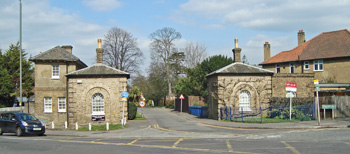
The entrance lodges to Beckenham Place at the southwest driveway.
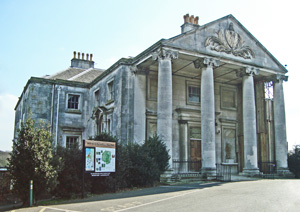
The mansion house was built of ashlar (above and below).
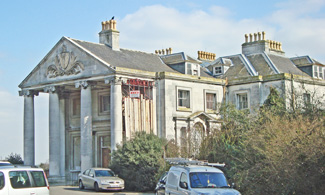
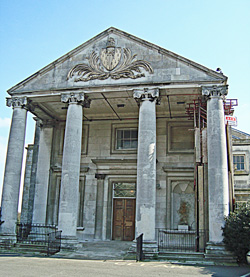
The portico is said to have been added to the northwest elevation in 1787, having been brought from Wricklemarsh House in Blackheath.
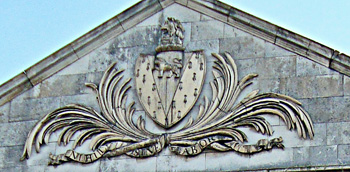
On the pediment is a cartouche of the arms of the Cator family, set in foliage. It bears the motto nihil sine labore (nothing without effort).
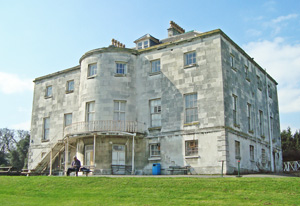
The building, as seen from the east (above) and from the south (below).
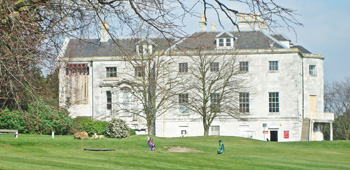
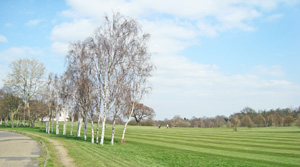
The golf course lies to the east, south and west of the building.
N.B. Photograph obtained in February 2014

No. 93 Church Road was used as the female section of the Sanatorium. In the recent past it has held a pop-up community gallery - the Bigger Art Gallery - and a Yogusensi juice bar (now closed).
Astley Copper JW 1913 Pathological Inebriety. Its Causation and Treatment. London, Bailliere, Tindall & Cox.
(Author unstated) 1903 Where Shall I Send My Patient? Bournemouth, Association of Medical Men Receiving Resident Patients.
(Author unstated) 1906 The treatment of inebriety. British Medical Journal 1 (2354), 350.
(Author unstated) 1909 The Norwood Sanatorium. Lancet 173 (4465), 956.
(Author unstated) 1910 Medical News. British Medical Journal 1 (2557), 59.
Hare F 1908 The Sanatorium treatment of inebriety. British Journal of Inebriety 6, 29-35.
Hare F 1912 On Alcoholism. Its Clinical Aspects and Treatment. London, J & A Churchill.
McBride CA 1910 The Modern Treatment and Drug Narcotism. New York, Redman Co.
http://brownhillgroup.co.uk
https://en.wikipedia.org
www.beckenhamplaceparkfriends.org.uk (1)
www.beckenhamplaceparkfriends.org.uk (2)
www.beckenhamplaceparkfriends.org.uk (3)
www.beckenhamplaceparkfriends.org.uk (4)
www.lewisham.gov.uk
Return to home page